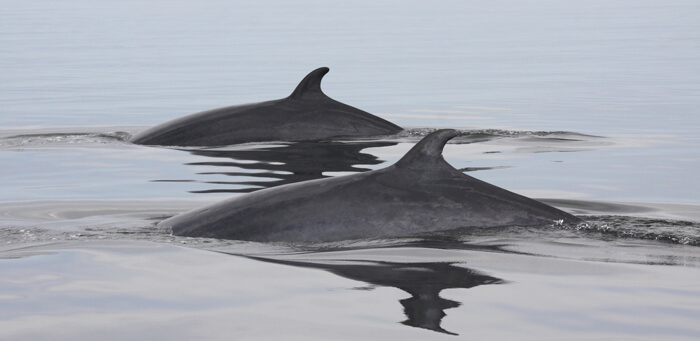Ratatouille
Minke Whale


- ID number
-
Sex
unknown
-
Year of birth
unknown
-
Known Since
1997
Observations history in the Estuary
Years in which the animal was not observed Years in which the animal was observed
Dernières nouvelles issues des publications Portrait de baleines
Ursula Tscherter of ORES speaks about Ratatouille like an old friend. For her, the subtle marks on its dorsal fin form a immediately recognizable pattern: the top is slightly truncated, and two small notches can been discerned on the trailing edge, one triangular and the other circular. Subtle, but effective, this signature has allowed Ursula to monitor the habits of this minke whale since 1997.
Ratatouille would be encountered at the head of the Laurentian Channel, off the coast of Pointe Carriole, and between Buoy K54, the Prince Shoal Lighthouse and Buoys K55 and K51. But it has been known to deviate from its ways: in 2005, it was seen swimming up the St. Lawrence as far as Saint-Siméon in Charlevoix. Ratatouille feeds in deep water, and therefore is not seen performing showy manoeuvres to herd fish at the surface.
But its behaviour presents another curiosity: it is one of the few minke whales in the region that forms pairs or trios. According to the director of ORES, such association behaviour in minke whales has never been documented anywhere else in the world. Prior to 2000, it was not observed here either. Since then, the habit has been spreading. These groups form when the animals seem to be feeding in deep water, and last anywhere from 15 to 90 minutes. Perfect synchronism observed during their surface breathing suggests that members of a duo or trio also work together to capture prey. But the mystery endures… Ursula dreams of conducting a study using a device called DTAG, a tag that would allow detailed monitoring of the minkes’ underwater movements to finally understand their behaviour in this third dimension.
Male and female minke whales cannot be distinguished based on their general appearance. As local minke whales are not biopsied, we cannot rely on genetics. How then does ORES know that most individuals that frequent the Estuary are females? Researchers take advantage of a showy manoeuvre at the surface to view the whales’ ventral area!
